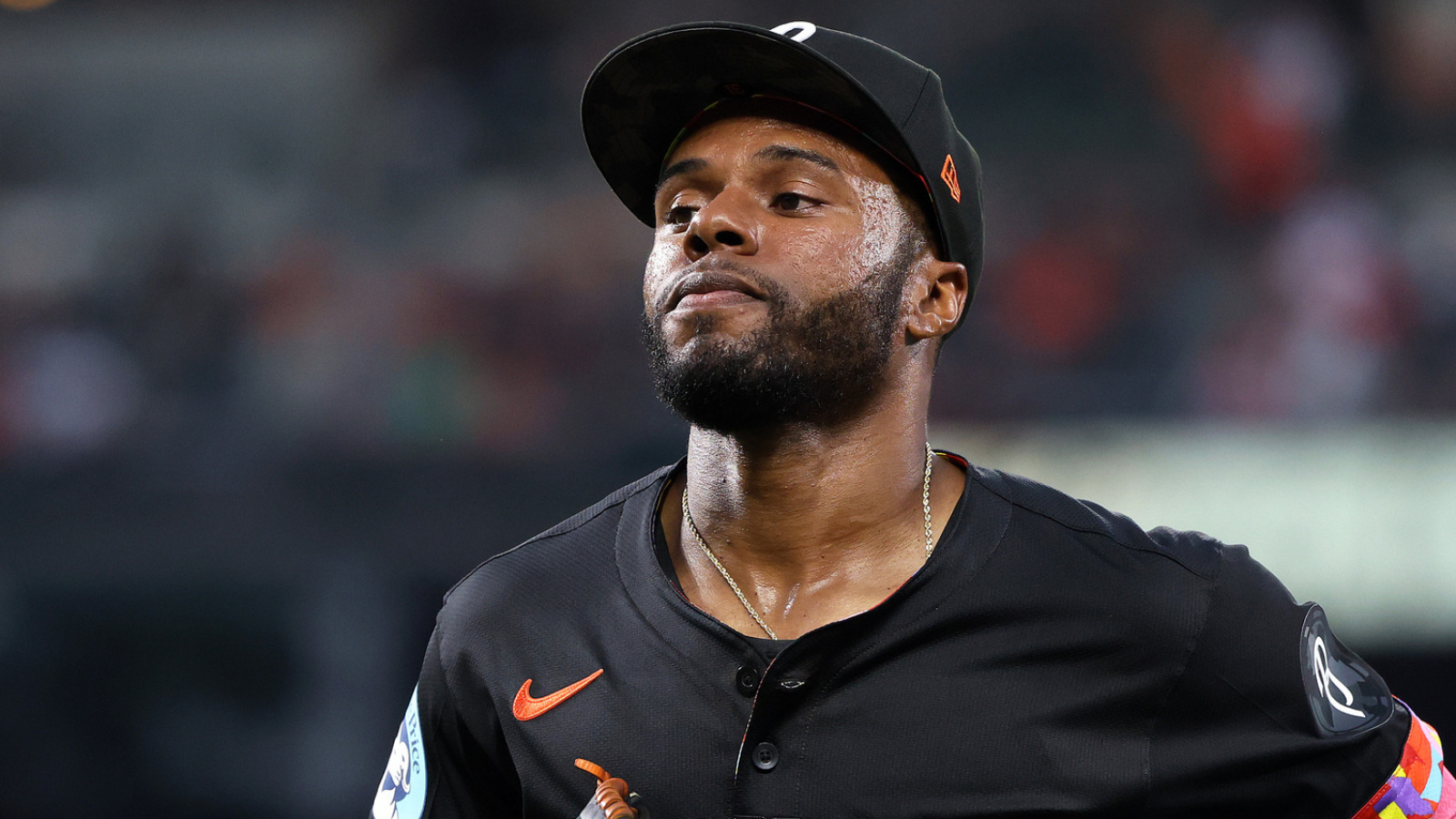In a significant move poised to reshape their playoff aspirations, the New York Mets have officially acquired veteran outfielder Cedric Mullins from the Baltimore Orioles. This high-profile trade, announced by both clubs, sees the Mets bolster their outfield depth while sending promising pitching prospects Raimon Gómez, Anthony Nunez, and Chandler Marsh to the Orioles in exchange. The deal underscores the Mets’ commitment to a deep postseason run, addressing a critical need in their lineup with an established talent.
Cedric Mullins, a 30-year-old center fielder, embarks on the first team change of his career, having been drafted by the Orioles in 2015. After several seasons of part-time play, Mullins exploded onto the scene in 2021, achieving an impressive 30-30 season with 30 home runs and 30 stolen bases. His exceptional slash line of .291/.360/.518, combined with strong defense, earned him a remarkable 136 wRC+ and six wins above replacement, establishing him as a rare bright spot during the Orioles’ rebuilding phase.
Mullins’ tenure in Baltimore served as a bridge, linking the Orioles’ rebuilding era to their recent emergence as a contender. However, the 2025 season has proven challenging for the Orioles, with multiple injuries contributing to a 50-59 record and a clear seller status. As an impending free agent, Mullins became a prime candidate for trade, joining a list of other notable players the Orioles have moved this season, including Anthony Santander, Yennier Cano, Jorge Mateo, and Ryan O’Hearn.
For the New York Mets, Mullins represents a sensible and timely addition, given their persistent struggles in center field this year. The season began with Harrison Bader and Tyrone Taylor as primary options, but injuries and underperformance plagued the position. Bader suffered a fractured tibia early on, keeping him sidelined for nearly three months, while Taylor has posted a dismal .201/.258/.295 line. These challenges led the Mets to actively seek solutions, linking them to several prominent center fielders, with Mullins emerging as their ultimate target.
The acquisition of Cedric Mullins is expected to have a ripple effect on the Mets’ infield dynamics. With Mullins taking over in center, Jeff McNeil, who has been frequently playing the position, can now revert to his natural second base role. This shift could potentially open the door for the Mets to consider trading one of their young infielders. The team currently employs Brett Baty, Mark Vientos, and Jose Caballero across second and third base, and reports indicate a willingness to move a player from this group, although no deals have materialized yet.
Financially, the Mets are absorbing approximately $2.8 million of Mullins’ $8.725 million salary for the remainder of the season. As a third-time payor of the competitive balance tax and already exceeding the top tier, the Mets face a substantial 110% tax rate on this additional payroll. This translates to an estimated $3.1 million in taxes, bringing the total cost of acquiring Mullins for their stretch run and potential postseason bid to nearly $6 million. For a franchise known for some of the highest payrolls in MLB, this investment is a minor one aimed at securing immediate success.
In return, the Baltimore Orioles receive three intriguing pitching prospects, all considered long-term projects with significant upside. Raimon Gómez, 23, is lauded for his elite velocity, consistently hitting triple-digits, though his development has been hampered by health and control issues, including Tommy John surgery. Anthony Nunez, 24, a converted infielder, has shown rapid progress on the mound, reaching Double-A with a low ERA and high strikeout rate, despite control challenges. Both Gómez and Nunez have prior Rule 5 draft eligibility, adding complexity to their long-term roster planning for the Orioles.
The third prospect, Chandler Marsh, 22, signed as an undrafted free agent last year, has impressed in his minor league innings with a solid ERA and strikeout rate, complemented by a strong slider. Unlike Gómez and Nunez, Marsh will not be Rule 5 eligible until after the 2027 season, offering the Orioles more time for his development. While all three present risks due to their raw talent and varying levels of experience, the Orioles are betting on their high ceilings to pay dividends down the line.
Ultimately, this trade represents a clear strategic divergence for both clubs. For the Orioles, parting with Mullins, an impending free agent in a lost season, allows them to acquire a trio of high-upside, albeit raw, pitching talents for their future. For the Mets, currently leading their division and aiming for a championship, Mullins provides immediate, much-needed assistance in their outfield, solidifying their roster for a significant postseason push. The move underscores the Mets’ “win now” mentality, prioritizing present success over the long-term development of prospects who were unlikely to contribute in the near future.






Leave a Reply